
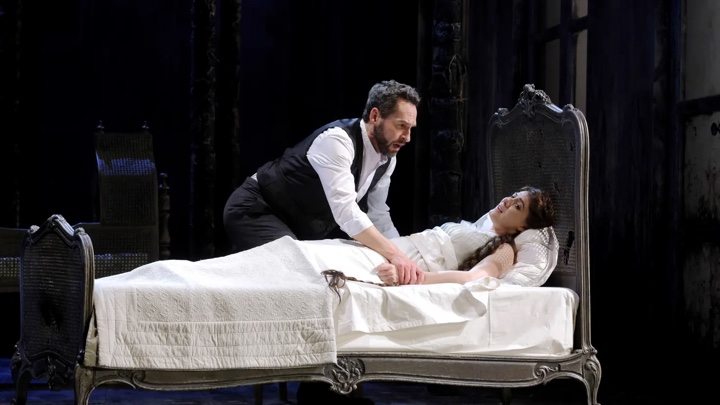
I’ve often said that with Conlon at the helm I feel like we’re getting the composer’s work more so than someone’s “interpretation” of such and this proved itself from the first. After the house lights dimmed signaling the start of the performance the house went completely black so that Conlon could enter and begin the opera in complete silence.
What followed was an exquisite musical performance with a deliciously muted transparency. In the intervening years the LA Opera Orchestra has certainly gained the expertise to succeed in such a challenging score. Conlon kept his players on a slow simmer for most of the evening until the interlude after Act IV scene 2; the episode of Golaud’s abuse of Mélisande in front of Arkel.
Here he finally, and justifiably, unleashed the full force of Debussy’s writing on the audience. Amplifying the devastation of the previous events to even more powerful effect. The following two scenes simply gained in emotional force as Conlon mirrored and matched the impassioned declaration of love that followed between Pelléas and Mélisande.
This was also my first experience with an actual child playing the role of Golaud’s son Yniold instead of the usual tomboyish soprano and it was revelatory. Kai Edgar was making his LA Opera debut in this pivotal role. Already having made his Met debut in Kevin Puts’ The Hours he’s scheduled to repeat Yniold this summer for Santa Fe Opera as well as the Shepherd in Act III of Tosca and at 11 yrs. old he has a lovely boy soprano and good clear diction. His growing anxiety in the balcony scene with his father was skillfully achieved and added a whole new level of credibility that I’d never felt in a work that can seem overly languid at times.
Further gravitas was brought by the presence of both Susan Graham, making a role debut as Geneviève and Ferruccio Furlanetto as the old King Arkel. Graham gave a beautiful reading of Golaud’s letter to Pelléas, full of expectation, but it was her silent and sweeping recrimination of Golaud in the final scene that carried the most weight in her performance.
Mr. Furlanetto brought all his formidable gifts to a part that is the real conscience of the drama. His delivery proved time and again that this is indeed a play set to music and Arkel often gets the most profound lines in the drama. At his age the voice isn’t without its infirmities but he used them fully to his advantage. He was especially moving in the last scene as he tried to comfort the dying Mélisande.
We were lucky for an uncommonly youthful pair of lovers. Will Liverman, who opened the Met’s last season to acclaim in Terence Blanchard’s Fire Shut Up In My Bones, proved a fine Pelléas. A tad prosaic at the start, he gradually gained his footing till his impassioned declaration of love in his final scene was nearly overwhelming. His burnished baritone easily encompassed the higher lying passages as well.
He was matched by the touching and effective Mélisande of Sydney Mancasola. She moved with a ballerina’s grace and fluidity while her soprano was shining and clear. She offered a near-perfect representation of Debussy’s fragile and enigmatic princess. The voice has a rare beauty and her line readings had just the right touch of innocence and ambiguity.
Kyle Ketelsen gets the majority of my praise, however, for his forceful and darkly luminous Golaud. He’s had much experience in the role and has already been presented at the Met as well as on commercial video from Zurich. The confrontation with Mélisande in front of his grandfather was harrowing as was his final, tortured, resignation in the last scene. His French was, I think, by far the most idiomatic of the cast. Along with the beauty of his voice and the intensity of his characterization combined for a very rare theatrical experience. It’s truly a magnificent portrayal.
David McVicar’s production was borrowed from Scottish Opera for the occasion and its revival entrusted to Leah Hausman who was also credited as Movement Director. It proved a bit surreal, which suits the subject, but mostly traditional and clear in the characters actions and intentions. There is a hook to the whole storyline which becomes apparent only at the very end and I’d be lying if I said I wasn’t disappointed since it seemed unnecessary.
Rae Smith’s sets combined two large walls that appeared to be made of industrial steel but weathered from time with the entire stage left covered with grand glass doors that were opaque. Birch tree trunks standing the height of the stage came and went as necessary (or not) for the outdoor scenes. Her costumes were all skillfully rendered in Edwardian style and extremely flattering and evocative. Ms. Graham looked especially regal and Ms. Mancasola had a beautiful white lace gown, high-waisted, with train that she handled with aplomb and used to great effect.
Pablo Santiago recreated the original lighting designs of Paule Constable with the help of projections designed by Jack Henry James Fox. Shimmering water reflections on the steel walls during the fountain and cave scenes were very atmospheric in spite of the general, and necessary, gloom.
Conlon’s love for the score certainly came through over and over and the LA Opera Orchestra played with a tender translucence that was well within the French tradition. He also managed to keep the performance grounded rather than having it becoming too ethereal which is the trap with this score.
This is the second time I’ve reviewed Pelléas on these pages and it’s never easy. The special nature of the work, which has so many qualifiers and nuances, makes it a hard decision about what to really speak on or highlight. I can say that this was by far my most satisfying experience with this opera for a multitude of reasons and I encourage anyone who’s even mildly curious to find their way to the Music Center for a very rich experience.
LA Opera has an interesting history with this opera. First presented in February of 1995 in a production borrowed from the Netherlands Opera, it was directed by Peter Sellars and designed by George Tsypin, and took place in a Malibu beach house under the glare of fluorescent lighting. Dispensing with the romantic fountain of the opening scene Mélisande was discovered next to a sewer pipe.
The great Jamaican bass-baritone Sir Willard White played the fiercely jealous Golaud on stage at the Music Center while across the street the clown car that was the O.J. Simpson trial enthralled the nation for all the wrong reasons. Mr. Sellars was roundly criticized for his complete lack of subtlety in a work filled with so much poetry and symbolism.
The bright spot was Esa-Pekka Salonen in the pit leading his then LA Philharmonic in a musical performance that was rapturously praised. In the old days if LA Opera wanted to do a really demanding orchestral work justice, like Tristan or Wozzeck, they used to hire the LA Phil because our pit band wasn’t what it should be. Twenty years later Maestro Salonen returned to Los Angeles to conduct a concert performance at Disney Hall again with the Philharmonic and I made certain to be there and wrote it up on these pages.
Photos: Craig T. Matthew / Los Angeles Opera




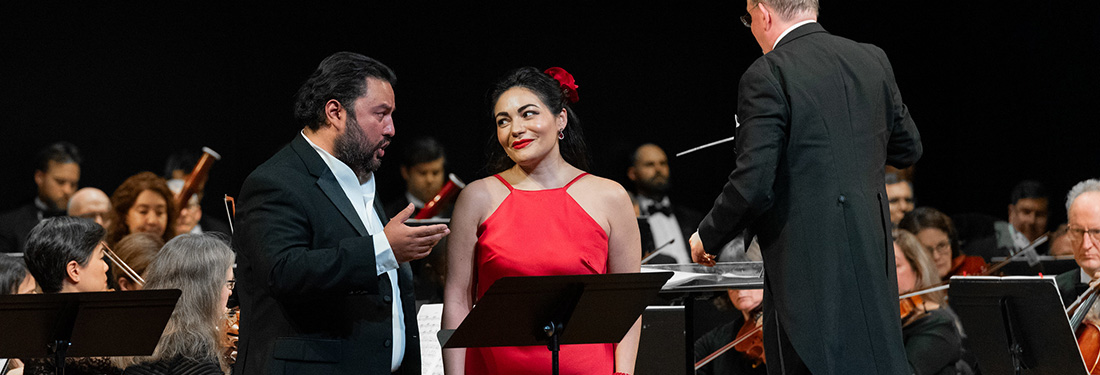
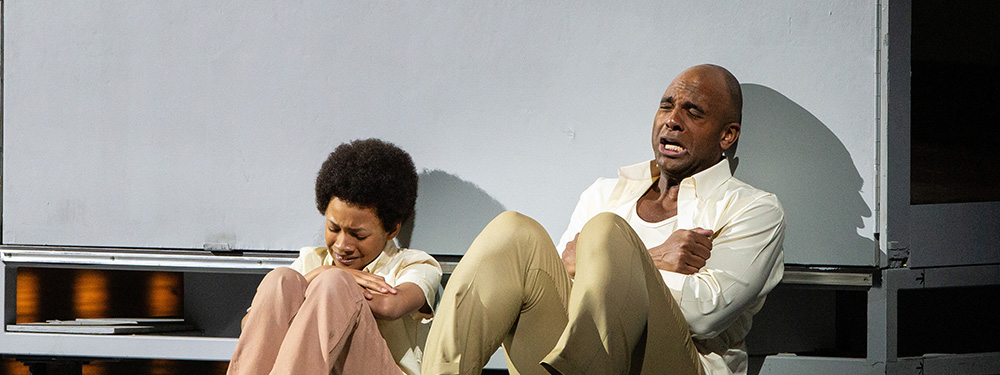
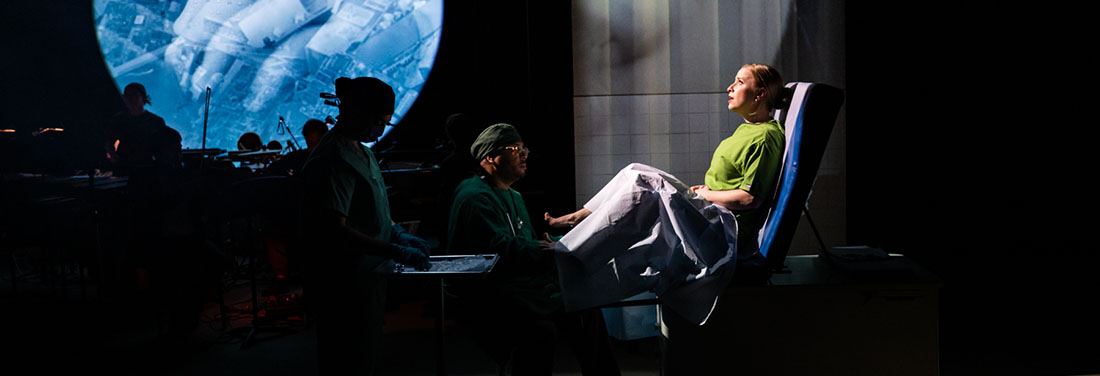
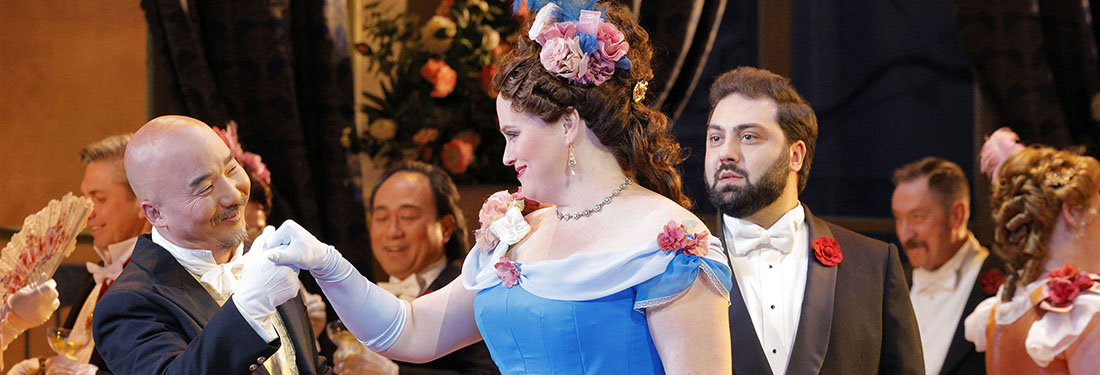

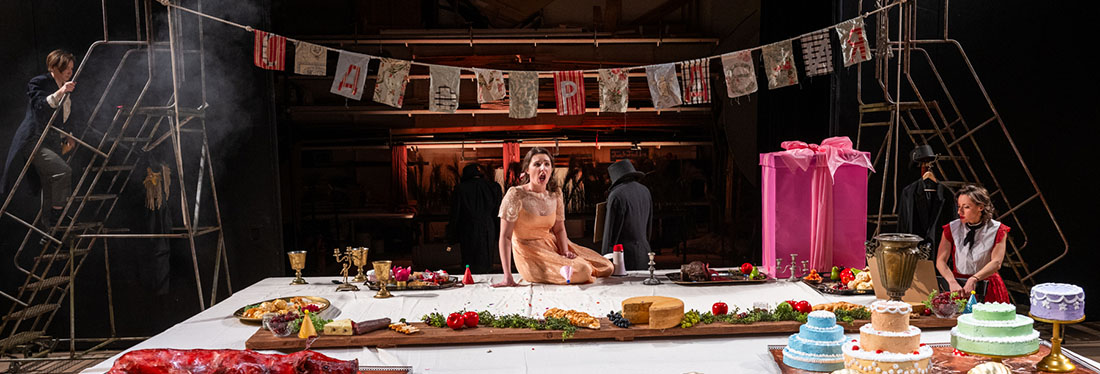
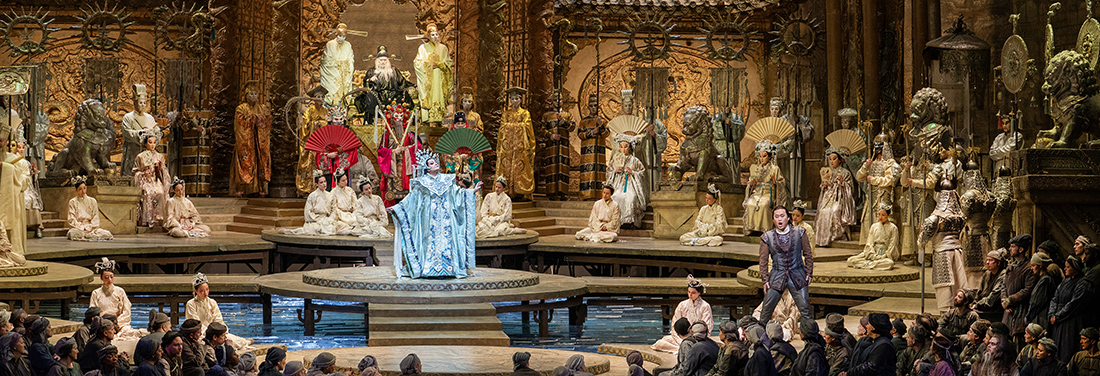
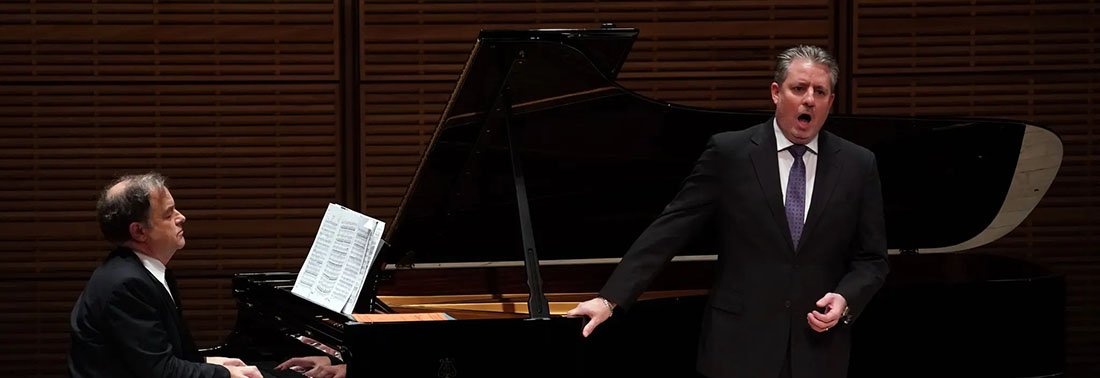
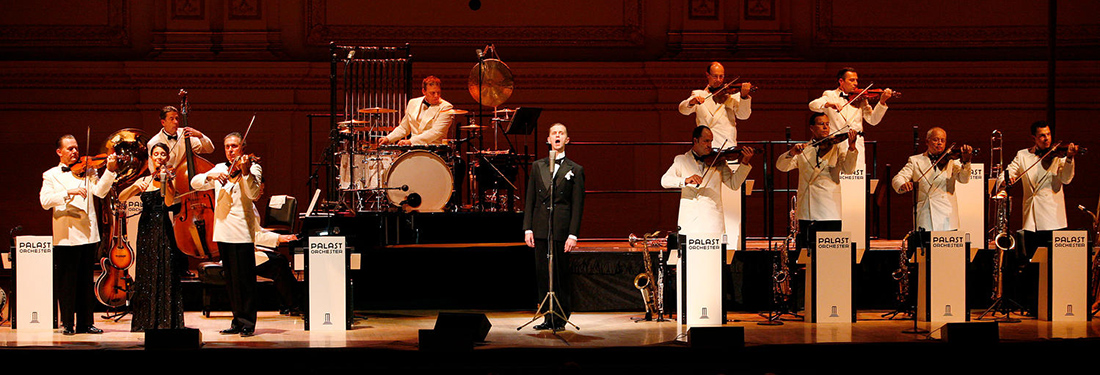
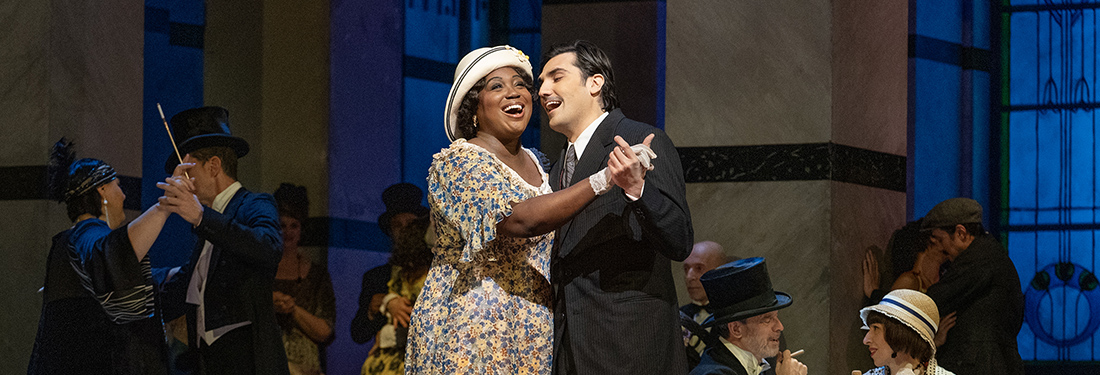
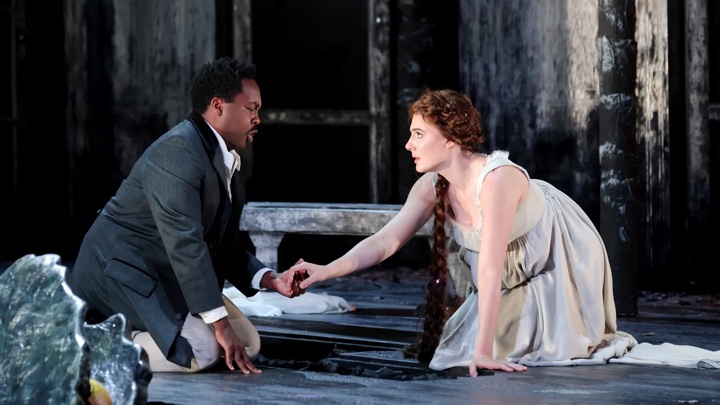
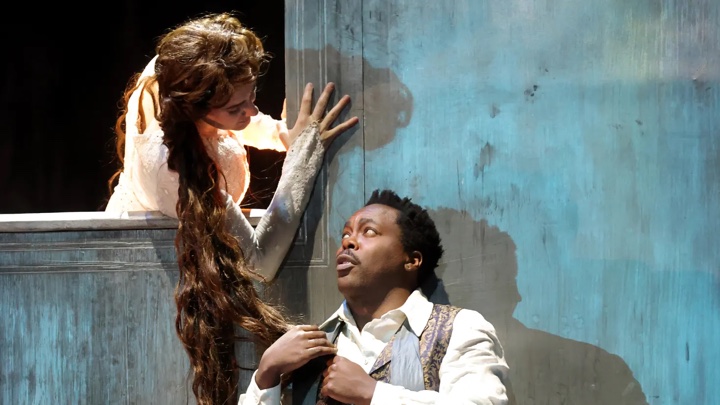
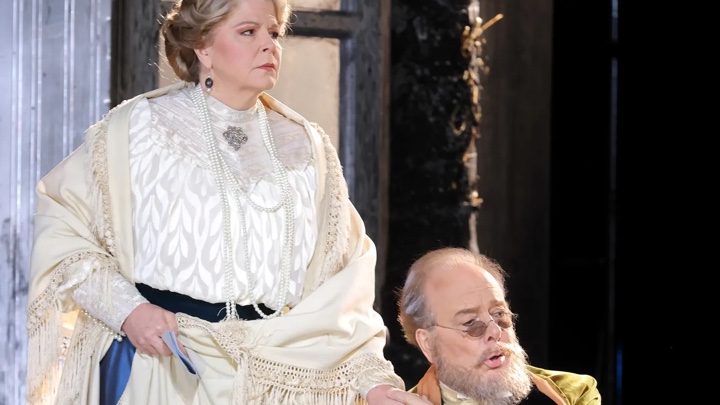


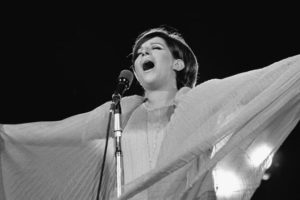

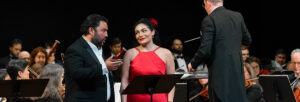




Comments